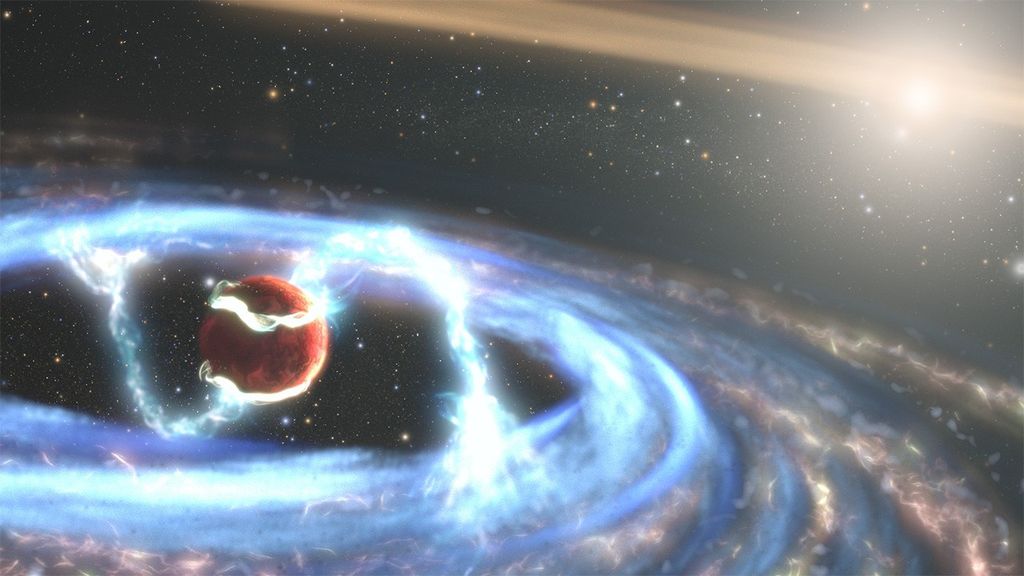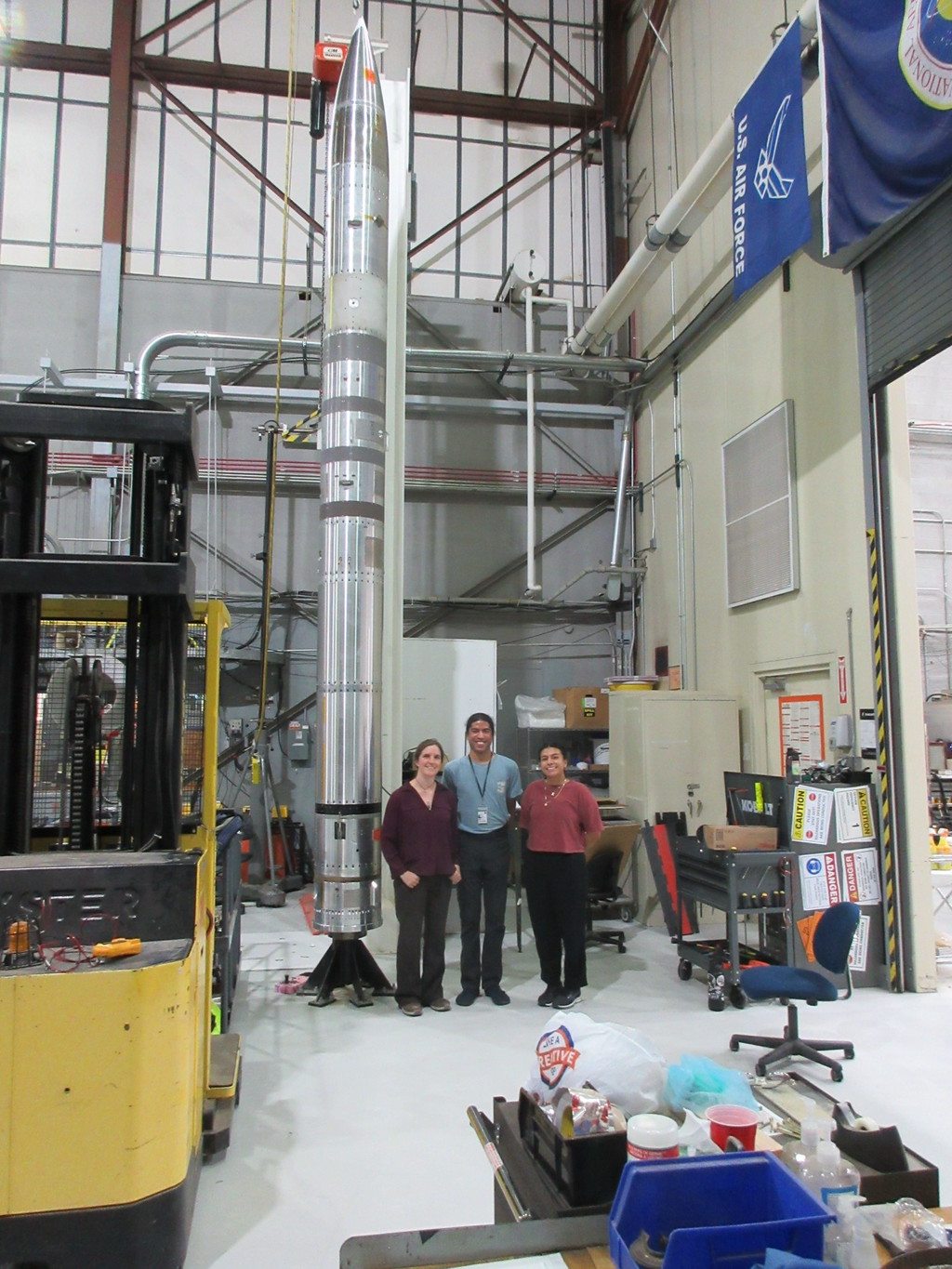Cassini is orbiting Saturn with a 31.9-day period in a plane inclined 48 degrees from the planet's equatorial plane. The most recent spacecraft tracking and telemetry data were obtained on Aug. 20 using the 70 meter-diameter Deep Space Network station at Canberra, Australia. The spacecraft continues to be in an excellent state of health with all of its subsystems operating normally except for the instrument issues described at http://saturn.jpl.nasa.gov/news/significantevents/anomalies. Information on the present position of the Cassini spacecraft may be found on "Eyes on the Solar System".
Cassini continued gathering speed while falling inward toward Saturn this week, then coasted through periapsis on Friday. An Orbit Trim Maneuver (OTM) executed early Monday morning to fine-tune the approach to Titan, Saturn's largest moon. The T-104 flyby will occur on August 21 while Cassini is on its way outbound again from periapsis, at an altitude of 964.0 kilometers above Titan's extraordinary surface. A web page has been published to describe the upcoming close encounter:
http://saturn.jpl.nasa.gov/mission/flybys/titan20140821.
During the flyby, Cassini's Synthetic Aperture Radar will obtain a long strip of high-resolution imaging, as illustrated in this image:
/resources/16085. The Ion and Neutral Mass Spectrometer (INMS) instrument will observe Titan's ionosphere during the flyby.
Wednesday, Aug. 13 (DOY 225)
The Imaging Science Subsystem (ISS), the Composite Infrared Spectrometer (CIRS) and the Visible and Infrared Mapping Spectrometer (VIMS) made an observation in the Titan monitoring campaign, from a distance of 3.8 million kilometers. These routine short observations, which range from 1.5 to two hours, are a good way of watching Titan's weather as it evolves. Next, ISS performed a one-hour satellite orbit campaign observation, looking for small objects orbiting close to Saturn. ISS then took advantage of the near-planet pointing and slewed over to Saturn to do a two-minute storm-watch observation. Next, VIMS observed the sunlit side of the rings for 10 hours, making a mosaic; CIRS and ISS took data in ride-along mode. After another two-minute storm watch by ISS, the Ultraviolet Imaging Spectrograph (UVIS) spent 2.5 hours measuring the ultraviolet albedo of the trailing hemisphere of Saturn's 396 kilometer-diameter satellite Mimas, with VIMS riding along.
Near the end of the day, ISS took control of spacecraft pointing to observe the distant, irregular moon Tarvos; VIMS rode along for the 13-hour observation. Named after a deity in Gaulish mythology, Tarvos has a diameter of about 14 kilometers. This very dark-surfaced body occupies a highly eccentric, inclined orbit reaching as far as 17.9 million kilometers from Saturn.
Thursday, Aug. 14 (DOY 226)
After doing another quick storm watch on Saturn, ISS led CIRS and VIMS in a six-hour observation of Saturn's faint rings at low-phase illumination. At the end of this activity, ISS spent another two minutes on a Saturn storm watch.
Friday, Aug. 15 (DOY 227)
ISS, CIRS and VIMS monitored Titan for 1.5 hours again; this time the hazy moon had come within 1.15 million kilometers. ISS then performed another hour-long observation in the satellite orbit campaign. Next ISS, with VIMS riding this time, made a quick Saturn storm watch. When that was done, CIRS took control of pointing for 12 hours to perform an observation of the planet to better determine its composition, with VIMS taking data in ride-along mode. The day ended with one final two-minute ISS Saturn storm watch.
Saturday, Aug. 16 (DOY 228)
ISS spent 13.5 hours imaging the narrow, ever-changing F ring at low resolution to make a movie. CIRS and VIMS participated as riders.
Sunday, Aug. 17 (DOY 229)
UVIS made one slow scan across Saturn's illuminated hemisphere to form images in the far- and extreme-ultraviolet part of the spectrum. CIRS and ISS rode along with this 7.6-hour observation, and ISS captured polarimetry data using filters in its wide-angle camera. Next, ISS, CIRS and VIMS conducted a joint observation to capture data on Saturn's wind speed and to observe polarization effects.
Monday, Aug. 18 (DOY 230)
Cassini received freshly prepared commands from the flight team engineers at JPL that turned the spacecraft and fired its small rocket thrusters for 29 seconds. This Orbit Trim Maneuver #388 provided a desired change in velocity of 32 millimeters per second that adjusted the approach target by 11 kilometers for the Titan T-104 flyby on August 21.
UVIS, with VIMS riding along, viewed Saturn's south polar region for 3.5 hours with rapid slews to image the auroral zone. VIMS then led the pointing, with ISS and CIRS riding, to take more observations of Saturn's south polar auroral region, making four maps centered at the south pole.
Featured today is a most beautiful image, taken from three million kilometers above a most amazing ringed planet:
/resources/16084
Tuesday, August 19 (DOY 231)
ISS spent one hour performing a series of images along the bright limb of Saturn, with VIMS riding (this observation was repeated twice more by the end of the day). When the first limb-scan completed, CIRS observed Saturn to study its chemical composition, which required staring at one location on the planet for 7.7 hours. All the other telescopic, remote-sensing instruments -- ISS, UVIS, and VIMS -- rode along.
Near the start of this observation, Cassini coasted through periapsis, having sped up to 27,728 kilometers per hour relative to the planet. Closest approach came at 901,330 kilometers above the cloud tops. (Compare this to Cassini's final orbits in 2017, which will come within 2,000 kilometers of the atmosphere.)
VIMS, with CIRS riding, spent 7.7 hours conducting another Saturn south hemispheric mapping observation, making mosaics centered on the south polar limb.
During the week while the spacecraft's attitude was managed for the benefit of the telescopic instruments, Cassini's direct-sensing Magnetospheric and Plasma Science MAPS instruments also continued collecting data for an ongoing magnetospheric survey campaign.
This week, the DSN communicated with and tracked Cassini on five routine occasions, using stations in Australia and California. A total of 136 individual commands were uplinked, and about 1,390 megabytes of telemetry data were downlinked at rates as high as 142,201 bits per second. Coherent Doppler-shift data and ranging data were obtained for a total of about 30 hours, and nine hours of Radio Science data were collected for system calibration.
































